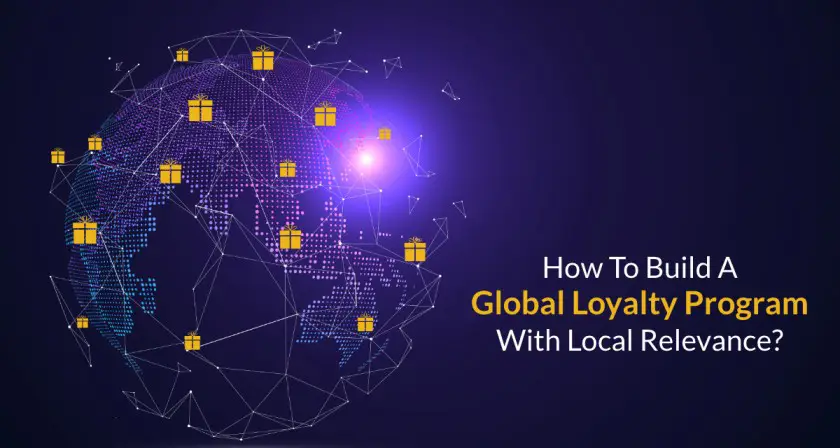Have you ever wondered why loyalty programs of global brands such as Netflix and Starbucks are so popular? The same loyalty program attracts diverse audiences across different regions with so little in common.
The answer is – adapting to the local market and cultural differences. A global loyalty program should be adaptable to match the requirements of localized customer segments to succeed with a diverse audience. This blog covers the aspects that make loyalty programs locally relevant.
Why Does Local Loyalty Matter in Rewards Programs?
Global brands have an audience with varied interests, preferences, and behavior. The audience is spread across geographies, different cultures, traditions, and government regulations. One strategy for all does not work to win the global game.
With a focus on local relevance, brands have better chances to become familiar with the audience, generate more engagement, and build healthy relationships. Location-based marketing can increase engagement by 84%. Localized strategies yield better results as they are more relatable to the local audience.
Actionable Steps to Create a Local Loyalty Program

1. Align Your Loyalty Program With Brand Values
Brands can form an emotional and value-based connection with customers by aligning their loyalty program with brand values. The target audience can differ based on demographics.
Brands can create multiple customer segments based on these demographics. They can localize the loyalty program while keeping the brand’s values intact.
For example, Ben and Jerry’s donate a percentage of the customer’s spending to local charities to stay true to brand values. Ben and Jerry’s have social, economical, and environment-oriented mission statements that encourage people to be part of it.
2. Recognize Market Differences
The buying behavior of the target audience differs significantly based on the location. For example, a KFC coupon might not be favored on a large scale in India, but the same reward could be a favorite in the USA. Therefore, for global loyalty programs to succeed, brands should focus on locally popular rewards.
The program structure, promotional strategy, rewards, operations, and sometimes even products can be modified to fit the local audience. Collecting and analyzing data of localized customer segments can help brands to identify market differences.
Coffee giant, Starbucks, adapted to the different cultures of Asian countries by adding tea in its menu. Furthermore, the brand offered Vienesses coffee and continental items in its French stores to attract local customers.
3. Privacy Regulations
Loyalty programs deal with a massive amount of data. This makes customer privacy a significant concern for brands. However, the privacy regulations are different in many countries.
Loyalty programs should adhere to these regulations in each region to ensure the complete security of customer data. In addition, the regulatory environment regarding business processes in each country and sometimes even within the states is different.
Customer rights, employee rights, and protocols differ based on regional policies.
4. Simplified Operations
The user interface and operations of the loyalty programs must be localized to ensure an efficient customer experience.
Some countries or regions might be habitual of tech-driven digital experiences, while in some areas the customers might like in-store experiences. Based on the behavior of the audience, brands should create customized experiences for different regions.
Localized methods of operations make it easier for customers to get their queries sorted and engage better with the brand.
5. Global Technology Stack
The tech stack is mostly the back-end part for brands. Adopting an agile technology stack to ensure a smooth operation of a loyalty program is a critical factor. If the technology makes it easier for customers to connect with the brand, the digital experience that loyalty members have motivated them to engage with the brand.
Having one tech stack for multiple geographies simplifies the data analytics and reporting process. Hence, adopting a global tech stack for loyalty programs ensures smooth operations. A global tech stack also helps the loyalty program stay in pace with the changing times.
6. Consistency of Messaging Along With localization
Brand messaging is unique for each brand based on the core values, brand voice, and unique value proposition. Therefore, brands must be consistent with their messaging.
This can be done by ensuring the message is the same in every channel and regularly acting on the brand’s value.
Though, the methods of communication and language of communication work better when localized. Disney+ hotstar has attracted a major share of the global audience in the OTT Industry because of its localized languages. Today, brands are choosing channels that are preferred by the local audience.
7. Flexibility in Offerings
Different target audiences have different requirements, preferences, and buying behaviors. USA-based customers have different sporting preferences than Asia-based customers.
Not just sports but the fashion industry is highly varied across the globe. Brands can regularly collect customer data based on demographics. This helps them in structuring the loyalty program to include relevant perks/products for different customer segments.
In addition, customers in different countries can have varying opinions on social issues. For example, customers in the UK believe climate change to be the biggest social issue and favor brands taking action on it. While in the US, customers favor brands acting on social issues like racism, inequality, and poverty.
8. Key Performance Metrics
The performance metric of every business operation is crucial for tracking performance. To track global loyalty programs, brands should track global and local performance.
Based on the goals set by the brand for a local audience, the KPIs should be based on the same goals. Brands can use certain KPIs to track the local and global performance of loyalty programs. But the KPIs for local performance should link back to the Global KPIs. These KPIs can include- active members, purchase frequency, repeat purchases, etc.
9. Bring People Together: Cross-functional Internal Team
To manage loyalty programs in different countries, brands must hire local personnel.
To deliver familiar brand experiences to customers, businesses must get local experts and local people on their teams. Local members bring cultural and traditional values to the table.
At the same time, the organization’s operation must be simplified for local employees to be productive. This can be done when the brand adopts local work culture in its operations. A cross-functional team is a great way to deliver unique customer experiences.
10. Seamless CX Across All Countries & Touch Points
The loyalty program must have a seamless user interface for the convenience of every customer. The program can provide a better customer experience by personalizing the loyalty program’s interface based on specific cultural and social norms. Customer support should also be provided at all touchpoints. The loyalty program should also support multiple languages for different audiences.
In addition to the above aspects, the key components for any global loyalty program to succeed include- Deep data analytics for optimal program design and an enterprise-grade technology platform for ease of launch & maintenance. Lastly, ongoing strategy consultation for exceptional ROI. A loyalty program that satisfies different customer segments can go a long way in retaining customers.


